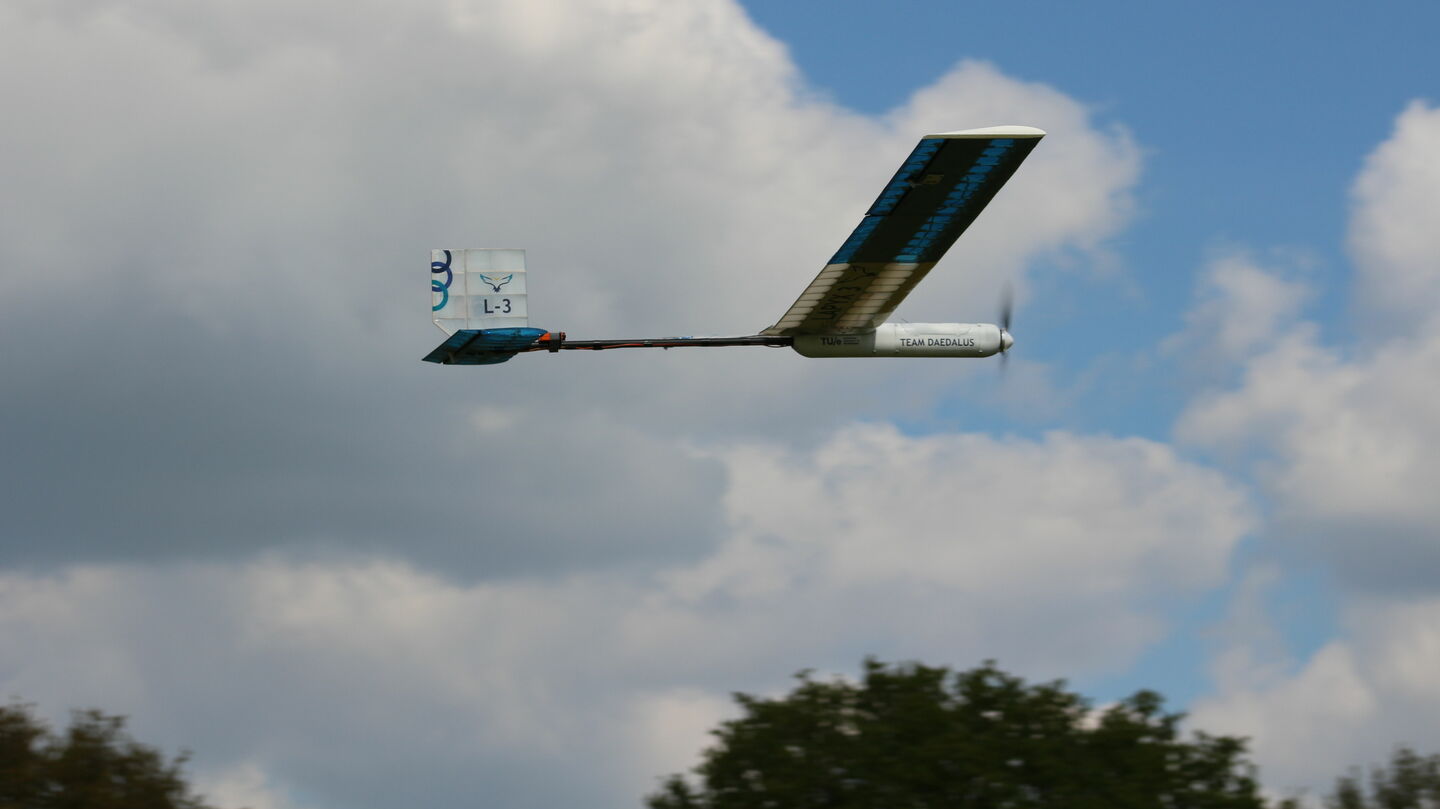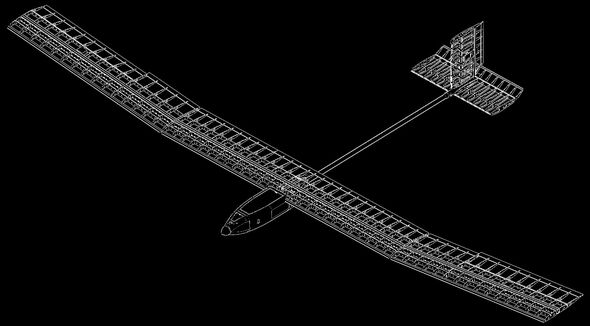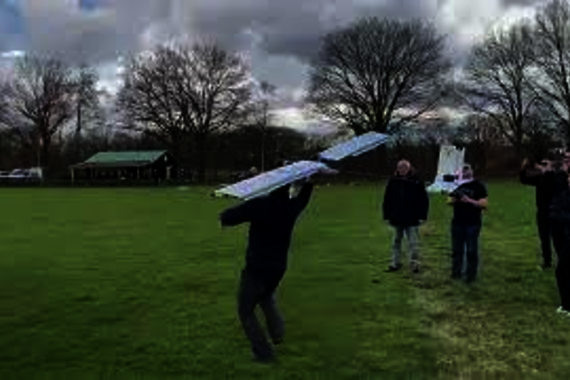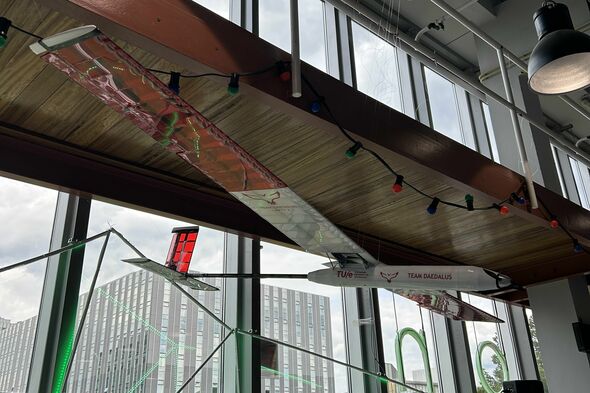
Team Daedalus wants to monitor wildfires with its plane
Wildfires are more and more prevalent than ever before. Even in the Netherlands, where this was rarely a problem before due to the wet climate. According to student team Daedalus, existing technology to monitor wildfires is limited. With their autonomous plane, they are trying to change this.
Daedalus' concept is simple: small planes with a thermal camera to monitor forest fires. “Apart from fire, the thermal camera also picks up people, because of their body heat. This is very helpful for firefighters in case of a fire, so they know if there are still people that need to be evacuated,” says Sean de Noronha, bachelor student in Mechanical Engineering and team leader of Team Daedalus. In addition to the thermal camera, their design also includes a regular camera so that video images can be viewed along in real time. “By seeing everything in real time firefighters can address the situation much more quickly, which allows them to prevent fires from getting too big to handle.”
The Dutch fire department currently uses mostly small propeller drones for this purpose. According to De Noronha, this is not ideal because they can only fly for a few hours before their battery runs out, and you need people to operate them. “Other, less frequently used options for monitoring are helicopters or satellites. However, both of these are relatively expensive and not as small and therefore not as agile as drones or small planes.”
Lapyx-4
The idea for Team Daedalus' latest design, called Lapyx-4, is that the plane can fly continuously day and night. “We’re trying to achieve this by combining solar panels from Mito Solar and multiple high-density batteries from Tulip Tech” explains De Noronha. If all goes well, the plane will run on solar power during the day, and battery power during the night. “On top of that, the goal is to make it autonomous, so no one is needed to operate the plane,” he explains. “When you don't need a pilot to fly the plane, it's a relatively inexpensive alternative to what's possible now. Ideally, in the future, firefighters would use an entire fleet of our planes so they can monitor different areas at the same time.”
Timeline of the iteration
That sounds like quite an accomplishment, but the student team didn’t achieve these successes overnight. “Our very first test flight of a model we made was almost two years after the team was formed. Unfortunately, we launched it, it took off and then immediately crashed,” De Noronha says with a laugh. “Since then, we've definitely come a long way.”
2021, February - Founding of Team Daedalus
In 2021, Team Daedalus is founded by Spanish-American Daniel Riechmann, bachelor student Mechanical Engineering (ME) at the time. “Both Spain and LA, where he was born, are affected by wildfires a lot, so he has seen the effects of it. This sparked his idea of developing something that could help minimize the damage or even prevent these situations,” De Noronha.
In the beginning, a lot of time goes into non-technical things, he explains. “Things like setting up a foundation and getting sponsors for the team, for example.” Then the basis is laid for their very first plane: Lapyx-0. “Because this was the very first model we made, everything had to be designed from scratch. This was quite a challenge because the team almost fully consisted of first year Mechanical Engineering students, so there was not much knowhow on how to go about this process.”
2023, March - Lapyx-0
In March 2023, Lapyx-0 has become a reality and is ready for its first test flight. Unlike the most recent model (Lapyx-4), Lapyx-0 is not autonomous and must be operated by remote control. “It was the very first flight of something we made, so that in itself was special. But unfortunately it didn't sustain any flight after being launched and crashed down almost immediately.”
2023, May - Lapyx-1
Just two months later, the team has already made the necessary improvements and Lapyx-1 is a fact. “Fortunately, this model didn't crash down after launching it. However, at higher speeds the wings started to flutter, which caused the pilot to lose control over the plane.” The team soon finds out that the flutter is caused by a lack of torsional stiffness in the wings, something they will work on for the next version, Lapyx-2.
2023, November - Lapyx-2
To make the wings stiffer, the team is changing the materials used. “By combining balsa wood and plywood, and covering it with a heat shrink called Oracover the wings became much stiffer.” This modification proved a success, as the fluttering was eliminated during the first test flight in November. “Lapyx-2 was our first real success, it has done many successful flights after which we retired it to work on a newer model, because there's always room for improvement.”
2024, April - Lapyx-3
In terms of size and appearance, Lapyx-3 is very similar to its predecessor, yet significant changes have been made. “We made a lot of adjustments in terms of weight saving, so it only weighs 3.5 kilograms, and we made the wings even stiffer.” This makes it easier for the pilot to keep the plane stable in the air.
Less successful is the attempt to implement solar panels in this version for the first time. This is because the first versions (Lapyx-0 through 2) only have a battery and therefore cannot fly continuously. Combining a battery with solar panels would, in theory, make it possible to do so. “Unfortunately, we weren't able to successfully implement the panels. At that time our team still almost entirely consisted of Mechanical Engineering students,” De Noronha explains. “However, shortly after this we recruited our first Electrical Engineering students on the team. This is why in Lapyx-4 we were successful in implementing the panels.”
2025, May - Lapyx-4
And that's not the only new thing about Lapyx-4. In addition to the successful implementation of solar panels on the wings, this is also the first model that can fly autonomously. “The way this works is by setting waypoints on the map, which the plane then continuously follows,” De Noronha said. “We've already tested this on a smaller testing prototype and we're in the process of implementing it on Lapyx-4.”
He points out that this improvement is also mainly due to having a diverse team. “Apart from our new Electrical Engineering recruits, we also recruited Computer Science students, which helped a lot with implementing functions like autopilot or fire detection algorithms.”
If all goes well and all the finishing touches are in place, Lapyx-4's very first test flight will follow later this month. “And we're going to organize a reveal event as well.”
We're in close contact with the Dutch fire department, to make sure that what we're developing can actually be used in their way of working
Entering the market
Team Daedalus' ultimate goal is that their technique can be put to practical use, helping firefighters in high-risk areas map wildfires more quickly and thus minimize damage. “With this in mind, we've been in close contact with the Dutch fire department from the very beginning. They help us make sure that what we're developing can actually be used in their way of working, and that it ticks all the boxes in terms of regulatory compliances.”
But, he says, for now the focus is still on creating a proof of concept. “At this point we're really trying to prove that our technology works. So we're not working on a consumer-ready product just yet,” De Noronha said. Student teams that turn into spin-offs are not uncommon; for example, from student team SOLID came the spin-off RIFT, and from Team STORM came ELEO. “It would be great if Team Daedalus would be able to do that to, but again, we're not there just yet. Maybe in five year time you can ask that question again.”






Discussion